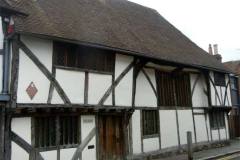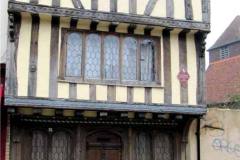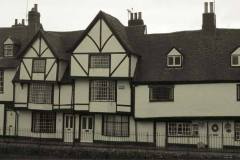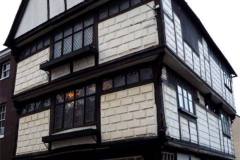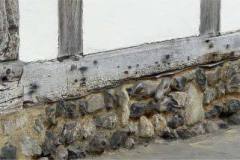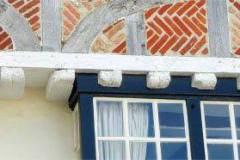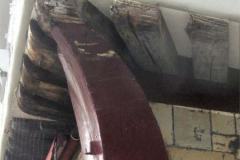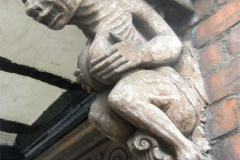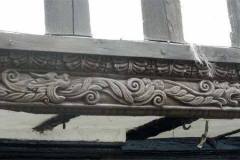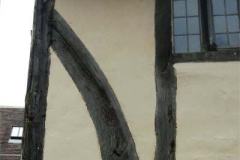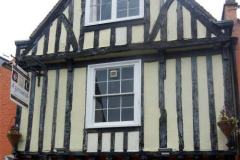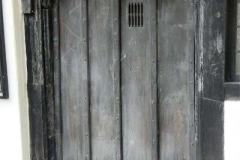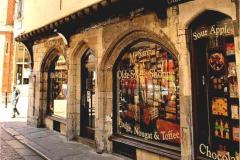Period
Mainly 14th to 17th century.
Description
Virtually all domestic buildings in Canterbury before the advent of the brick industry in the 16th century were timber-framed. In fact, many buildings within the city walls are still timber-framed although later alterations disguise this. An early form incorporating a hall was the Wealden house, particularly found in the south-east of England, and so called due to its frequent appearance in the Weald of Kent. The earliest buildings were extravagant in the use of timber, in both the over-sized sections and spacings of the beams and in the studding. In early buildings, however, beams were laid with width greater than their depth, and this resulted in a weak structure (the depth of a beam gives it greater strength). Glass for use in house windows was not available until the 16th century. Before this most used internal shutters or oiled cloth to keep out draughts.
All buildings would have had some form of stone foundations, as well as a timber ground beam but these are mostly lost because of rot or raised street levels. Exposed timbers were often protected by applying limewash, although this is not usually the case today. Generally the upper storeys overhang the lower ones as a jetty and there could be two or three jetties. High status buildings sometimes have stone arcading on the ground floor and round-headed windows rather than square openings.
Examples
More features associated with timber-framed buildings see box frame, close studding, double overhang, dragon beam, nogging, pargeting and Wealden house.

